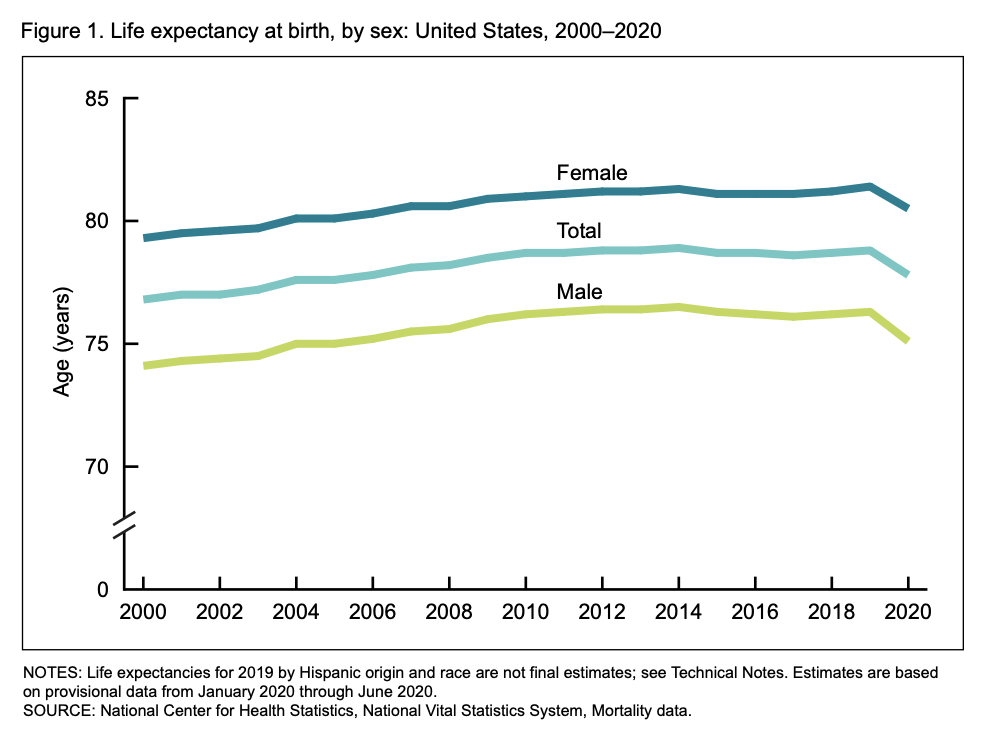COVID-19 pandemic cut life expectancy by 1 year during half of 2020
Just recently, the Center for Disease Control and Prevention (CDC) released the newest data life expectancy data for the United States. According to the CDC, between 2019 and 2020, life expectancy fell by a year in the United States. In 2019, the average life expectancy was 78.8, while in 2020, the number fell to 77.8. That’s its lowest level since 2006.

Generally, life expectancy moves in line with mortality. Increased mortality rates are associated with reduced life expectancy and vice-versa. For instance, between 2014 and 2017 the United States saw a slight decrease in its average life expectancy. This was mainly due to increases in mortality from unintentional injuries, Alzheimer’s disease, and suicide. In the same way, the United States experienced an increase in life expectancy between 2017 and 2018. This was mostly due to decreases in mortality from cancer, unintentional injuries, and chronic lower respiratory diseases.
It, therefore, follows that life expectancy has declined between 2019 and 2020. We have had numerous excess deaths from COVID-19 in the first six months of 2020, which is the period that this data covers. In addition, there were increased deaths from other causes like drug overdoses that accompanied the pandemic.
In 2020, we did not only suffer excess mortality from COVID-19, but we also saw an increase in deaths stemming from some measures that states took. Restrictions on medical procedures increased mortality for cancer and other health issues. Lockdowns and worsening economic outcomes increased deaths of despair among individuals.
It is too early to know the full impact of COVID-19 in many aspects of our lives. But this new data should make us worry about the toll that COVID-19 and the restrictions associated with the virus will have on our future health outcomes.